In 2025, Tara Jayanti will be observed on Sunday, April 6th . This auspicious day is a time for fasting, prayers, and deep spiritual reflection. Devotees seek the grace of Devi Tara, one of the ten Mahavidyas, through acts of devotion, mantra chanting, and sacred rituals that purify the heart and mind. It is believed that observing Tara Jayanti with reverence leads to removal of obstacles, divine wisdom, and protection from hardships, granting devotees peace, prosperity, and spiritual enlightenment. The day serves as a reminder of the transformative power of faith, unwavering devotion, and the boundless compassion of Goddess Tara, who guides seekers on the path of self-realization and ultimate liberation.
Significance & Importance of Tara Jayanti
Tara Jayanti is a sacred celebration of Goddess Tara, one of the ten Mahavidyas, who embodies divine wisdom, boundless compassion, and ultimate liberation. As the universal protector and guiding force, Devi Tara is revered as the one who removes obstacles, dispels ignorance, and grants fearlessness to her devotees. This auspicious occasion is observed with fasting, mantra chanting, and sacred rituals to invoke her divine grace, purify the soul, and seek spiritual awakening. Devotees worship Goddess Tara as the merciful savior, just as a mother safeguards her child, offering her guidance to those struggling with hardships and seeking enlightenment. Her protective energy shields devotees from negative influences, allowing them to progress on the path of righteousness and self-realization.
Beyond her role as a divine protector, Goddess Tara is the embodiment of supreme wisdom and spiritual transformation. She is associated with Brahma-jnana (self-realization), higher intellect, and transcendental consciousness, making this day highly significant for seekers of truth and enlightenment. In Tantric traditions, Devi Tara is revered as Adi Shakti, the primordial force that helps spiritual aspirants navigate deeper realms of consciousness and attain higher states of awareness. Her energy is both gentle and fierce, nurturing those devoted to her while destroying negative karmic influences that hinder spiritual progress.
The worship of Tara Devi on this day is believed to dissolve past sins, liberate the soul from worldly attachments, and awaken inner consciousness. Temples and spiritual centers conduct special homams, scriptural readings, and sadhana practices, allowing devotees to immerse themselves in her transformative energy. Tara Jayanti serves as a powerful reminder of the eternal presence of the Divine Mother, guiding her devotees with unconditional love, strength, and the wisdom to transcend all limitations.
Story of Tara Jayanti
Tara Jayanti is a sacred occasion that commemorates the divine power and compassion of Goddess Tara, one of the ten Mahavidyas in the Shakta and Tantric traditions. The story associated with her origin is deeply rooted in Hindu cosmology and has profound spiritual significance.
The most well-known legend of Goddess Tara is linked to the episode of the churning of the cosmic ocean, known as Samudra Manthana . During this event, when the devas and asuras churned the ocean to obtain the nectar of immortality, a deadly poison called Halahala emerged from the depths. This poison was so potent that it threatened to destroy all existence. In an act of supreme sacrifice, Lord Shiva drank the poison to save the universe, but its powerful effect began to burn his throat, turning it blue and earning him the name Nilakantha.
As Shiva struggled under the immense burden of the poison’s effect, the divine Goddess Tara appeared in her boundless compassion. She took Shiva in her arms like a mother caring for her child, placing him on her lap. With her infinite wisdom and power, she fed him her own breast milk, which neutralized the poison and restored his vitality. This act of nurturing and protection displayed her supreme maternal aspect, making her one of the most revered goddesses in Tantra and Shakta traditions.
Tara’s divine form is described as fierce yet benevolent. She is often depicted as blue-skinned, symbolizing the vastness of the infinite void, and adorned with a garland of skulls, signifying her transcendence over birth and death. She embodies both the power of destruction and the boundless grace of a mother who rescues her devotees from suffering and ignorance. In Tantric philosophy, she is associated with knowledge, liberation, and the guiding force that leads seekers across the ocean of samsara.
The veneration of Tara gained prominence in both Hindu and Buddhist traditions, where she is regarded as a savior deity who delivers beings from suffering. Her worship became especially significant in Tantra, where she is revered as the force that grants wisdom, fearlessness, and ultimate liberation. Tara Jayanti, therefore, is not just a celebration but a profound acknowledgment of the goddess’s role in protecting, nurturing, and guiding devotees on the spiritual path.
Festival Date, Time, Muhurat & Tithi
Tara Jayanti 2025 will be observed on Sunday, April 6th, 2025.
Navami Tithi (9th lunar day) of the Chaitra month as per the lunar calendar.
Key Timings for Tara Jayanti 2025:
-
Tara Jayanti Muhurat:
06:00 AM to 08:00 AM (IST)
Duration: 2 Hours - Navami Tithi begins at 07:26 PM on April 5th (IST)
- Navami Tithi ends at 07:22 PM on April 6th (IST)
Note: Sunrise and sunset vary by region and date due to India's geographical diversity. For exact timings, refer to local astronomical data.
How to celebrate Tara Jayanti
Tara Jayanti is a sacred occasion that allows devotees to connect deeply with the divine energy of Goddess Tara, who embodies compassion, wisdom, and protection. The celebration begins with a clean and sacred environment, where an altar is set up with a picture or idol of Goddess Tara.
Offerings of fresh flowers, especially blue or white ones, and incense are made to purify the space, while a lamp is lit to symbolize divine light. The day is initiated with the chanting of her mantra, 'Om Tara Tu Tara Ture Svaha,' ideally 108 times, as a way of invoking her blessings.
Devotees also read sacred texts and stories about the goddess, focusing on her acts of compassion, especially during the churning of the ocean, where she displayed her nurturing aspect by saving Lord Shiva from the deadly poison. This storytelling enhances spiritual connection and devotion.
The celebration includes fasting, prayer, and the recitation of Tara’s sacred mantras, such as the Tara Stotra or the Tara Ashtakshara Mantra, which help invoke her divine protection. Devotees may perform a special puja, involving offerings of fruits, sweets, and symbolic items of reverence, guided by spiritual wisdom.
Meditation is also a key aspect of Tara Jayanti, offering time for introspection and connection to the goddess’s energy. Acts of charity, whether through donations or service, are strongly encouraged as a means to honor Tara’s nurturing and compassionate qualities.
The day concludes with a closing prayer, offering gratitude for her divine guidance and distributing prasad to family and friends, ensuring the blessings are shared with all. This celebration, rooted in both devotion and spiritual practice, strengthens the connection with Goddess Tara, seeking her guidance for wisdom, protection, and liberation from the challenges of life.
Tara Jayanti Puja Vidhi (Puja Procedure)
Tara Jayanti Puja begins with the purification of the worship space. The altar is cleaned thoroughly, and a picture or idol of Goddess Tara is placed in the center. It is customary to decorate the idol or image with fresh flowers, particularly blue or white ones, which symbolize the goddess's attributes.
Lighting a lamp or incense in the beginning helps to purify the surroundings, setting a peaceful and spiritual ambiance for the puja. Devotees should offer their prayers and prepare mentally for the worship, focusing their mind on the divine presence of Goddess Tara.
The puja begins with the chanting of the Tara mantra, “Om Tara Tu Tara Ture Svaha,” which is repeated 108 times. This mantra invocation is a powerful way to invoke Goddess Tara’s energy and seek her blessings for protection, wisdom, and spiritual advancement. Following mantra chanting, devotees may recite prayers or verses from the Tara Stotra or the Tara Ashtakshara Mantra . These sacred texts praise her divine qualities and acts of compassion, particularly the story of her protection of Lord Shiva during the churning of the ocean. These recitations deepen the connection with the goddess and help the devotee invoke her grace.
Offering flowers, fruits, and other sacred items such as sweets, water, or milk is an integral part of the puja. Devotees may offer these items one by one while chanting mantras to honor the goddess.
If fasting is observed on Tara Jayanti, the devotee may break the fast by offering the food as prasad to Goddess Tara, symbolizing the act of devotion and surrender. Light incense and the offering of a ghee lamp to the goddess further amplify the energy of the puja. This aspect of the puja emphasizes surrender and devotion, trusting in the goddess’s guidance and protection.
As the puja draws to a close, devotees offer their gratitude to Goddess Tara for her blessings and protection. A final prayer is recited to seek her guidance on the spiritual path and to express appreciation for her nurturing and compassionate qualities.
The prasad, or consecrated offerings, are then distributed among the family and guests, ensuring that the divine blessings are shared. After the puja, devotees may spend time in meditation or reflection, contemplating the teachings of Tara and the wisdom she offers. This concludes the puja, leaving the devotees in a state of peace, gratitude, and connection with the divine energy of Goddess Tara.
Tara Jayanti Puja Mantra
The following are key mantras that are typically recited during the Tara Jayanti Puja to invoke the blessings and divine energy of Goddess Tara. These mantras help create a sacred atmosphere and are believed to bring wisdom, protection, and spiritual growth to the devotee.
The primary mantra for invoking Goddess Tara is:
'Om Tara Tu Tara Ture Svaha'
This is a powerful mantra associated with Goddess Tara, calling upon her compassionate and protective energy. It is recited 108 times, or any number deemed auspicious, to purify the mind and invite her blessings.
Another important mantra is:
'Om Hrim Tara Tare Tuttare Svaha'
This mantra is also highly revered in Tantric practices, and it is believed to invoke the goddess's ability to overcome difficulties, provide wisdom, and bring liberation. The syllables “Hrim” and “Svaha” are sacred sounds that enhance the spiritual connection during the puja.
Tara Stotra is also an essential prayer to recite during Tara Jayanti, as it praises the goddess's divine qualities. Some verses from the Tara Stotra include:
'Om Jai Tara, Tara, Tara, Tara, Mahatara, Maha Vidhya, Maha Saraswati, Mahalakshmi, Mahadevi'
This verse calls upon the different aspects of Tara, highlighting her powerful attributes as the embodiment of knowledge, wealth, and cosmic energy.
Each of these mantras, when recited with devotion, strengthens the connection with Goddess Tara and seeks her blessings for protection, wisdom, and spiritual guidance.
Tara Jayanti Vrat Vidhi (Fasting Procedure)
Tara Jayanti Vrat involves fasting with devotion and dedication to Goddess Tara, seeking her blessings for wisdom, protection, and spiritual growth.
The fasting begins early in the morning, and it is important to purify the body and mind before starting the fast. A devotee should take a ritual bath to cleanse themselves physically and mentally.
After the bath, one should dress in clean clothes and prepare an altar for the puja. The fasting can be either a complete fast or a partial fast, depending on the individual’s health and capacity. Many devotees choose to abstain from all food and drink, while others may consume fruits, milk, or water.
During the fasting period, it is crucial to maintain a focus on spiritual practices. The devotee should chant the Tara mantra, 'Om Tara Tu Tara Ture Svaha,' repeatedly, ideally 108 times or more. This chanting is done with full attention, invoking the goddess’s blessings and guidance. Reading sacred texts related to Goddess Tara, such as the Tara Stotra or the Tara Ashtakshara Mantra, further deepens the connection with the goddess. The devotee should also engage in meditation or prayer, contemplating the attributes of Goddess Tara and seeking her protection and wisdom. The key to the fasting is a mental state of devotion and surrender, allowing the energy of Tara to fill the devotee’s heart and mind.
The fasting concludes with a prayer of gratitude to Goddess Tara. Once the fasting period ends, the devotee may break their fast by offering prasad (holy offerings) to the goddess and consuming the prasad themselves. Fruits, sweets, and milk are commonly offered as prasad. It is essential to share the prasad with family and friends, as this symbolizes the sharing of divine blessings.
After completing the Vrat, the devotee should give thanks to Goddess Tara for her protection and guidance, and offer any remaining food to the less fortunate as a sign of charity. The day ends with a sense of peace and fulfillment, having honored the goddess and sought her divine intervention.
Tara Jayanti Vrat Katha (Traditional Fasting Story)
The Tara Jayanti Vrat Katha (traditional fasting story) is a narrative that highlights the power and compassion of Goddess Tara, emphasizing the significance of fasting and devotion on this sacred day. The story has been passed down through generations and is often recited by devotees as part of the Tara Jayanti Vrat, symbolizing the importance of self-discipline, faith, and spiritual connection with the goddess.
The story begins with a devout king and his queen who were blessed with great wealth and prosperity but were deeply troubled by their inability to have children. After years of longing and prayer, the queen, in desperation, decided to observe a strict fast on the day of Tara Jayanti, dedicating herself entirely to Goddess Tara. She performed the ritual with the utmost devotion, fasting without food and water, while engaging in continuous prayer and mantra chanting.
As the fast continued, the queen meditated on the goddess, focusing on her qualities of compassion, wisdom, and protection. Goddess Tara appeared to the queen in her divine form, expressing her approval of the queen’s devotion and the purity of her heart. The goddess granted her blessings, promising that her wish for a child would be fulfilled. True to her word, within a year, the queen gave birth to a healthy child, and the king and queen were filled with gratitude for Goddess Tara's grace and mercy. The story of the queen's devotion became well-known, and it is said that anyone who observes the Tara Jayanti Vrat with sincerity and devotion will be blessed with the goddess's protection and divine grace, overcoming obstacles and attaining their heart's desires.
The Tara Jayanti Vrat Katha teaches the value of steadfast faith, patience, and the power of invoking the divine. Through fasting and prayer, devotees are reminded of the transformative energy of Goddess Tara, who grants both material and spiritual blessings to those who seek her help with a pure heart. The story inspires followers to embrace the path of devotion and surrender, knowing that the goddess’s protection is always near for those who are truly devoted.
Puja Utensils, Essentials
Rudra Centre brings an extensive collection of Puja Articles which caters to all that is required for daily and special Puja Vidhis. We offer variants of designs and sizes in each category. The list includes handcrafted Puja Mandirs, Puja Pedestals, offering Bowls, Panchpatra, intricately carved Puja Thalis, Abhishek Vessels, in different materials, Pure Silver/German Silver articles like Kalash, set of Shodash Upachara and Several other Puja Articles, which we deliver at your doorstep.
Tara Yantra
The Tara Yantra is revered as a potent instrument for spiritual growth and personal transformation. It aids in conquering obstacles, achieving success, and attaining enlightenment. It offers a multitude of benefits, such as eliminating trouble and poverty, fostering compassion, peace, and serenity, granting comfort, wealth, and prosperity, providing protection, imparting knowledge and wisdom, and facilitating the attainment of sudden wealth and prosperity.
Conclusion
In conclusion, Tara Jayanti is a day of profound spiritual significance, dedicated to the worship and veneration of Goddess Tara, one of the ten Mahavidyas. It is a time for devotees to seek her blessings for wisdom, protection, and liberation from the challenges of life. Through fasting, prayer, and devotion, Tara Jayanti offers an opportunity for personal growth and connection with the divine feminine energy. The celebration emphasizes the importance of surrendering to the goddess, invoking her compassionate and nurturing qualities, and aligning oneself with her guidance. Whether through chanting mantras, observing rituals, or engaging in acts of charity, the essence of Tara Jayanti lies in fostering a deep, sincere devotion and experiencing the transformative power of Goddess Tara in one's life. By observing the Vrat and following the traditions associated with Tara Jayanti, devotees can invoke the goddess’s protection and blessings, bringing peace, wisdom, and divine grace into their lives.

-in-Astrology.jpg)

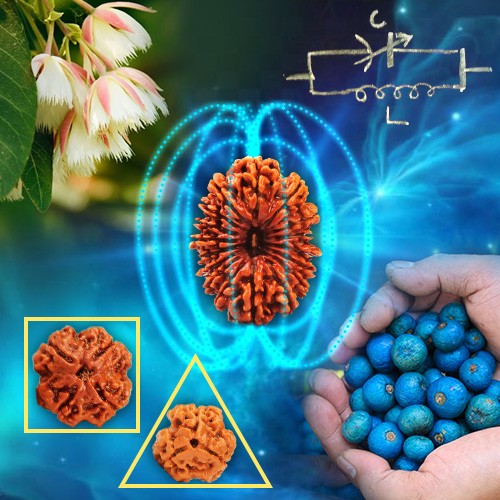
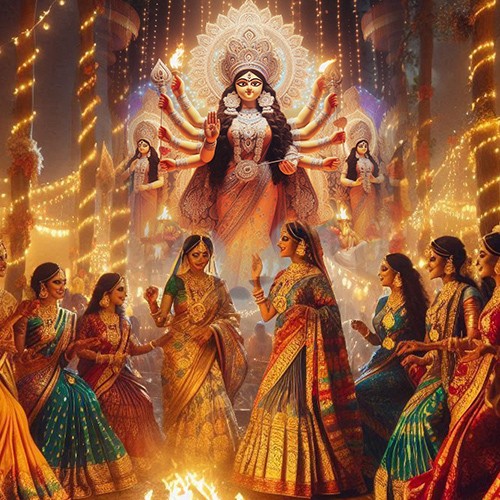


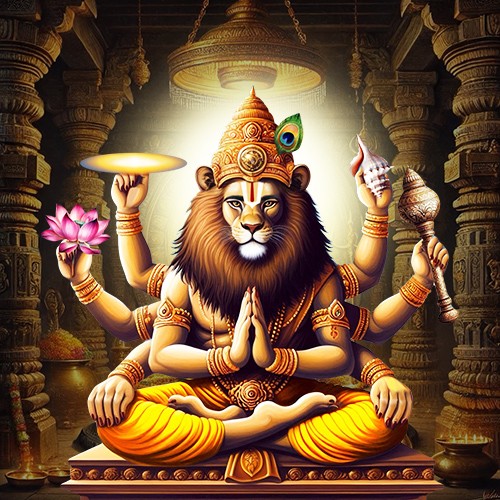

.jpg)
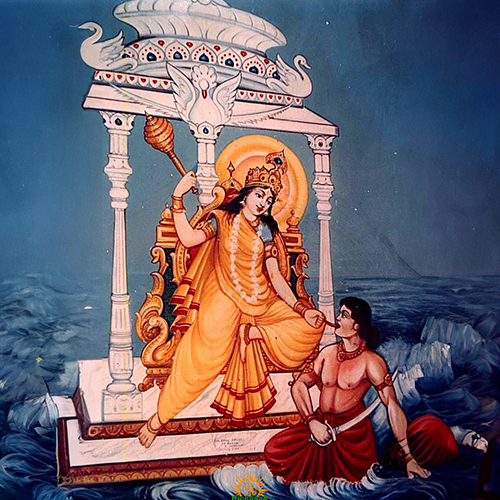
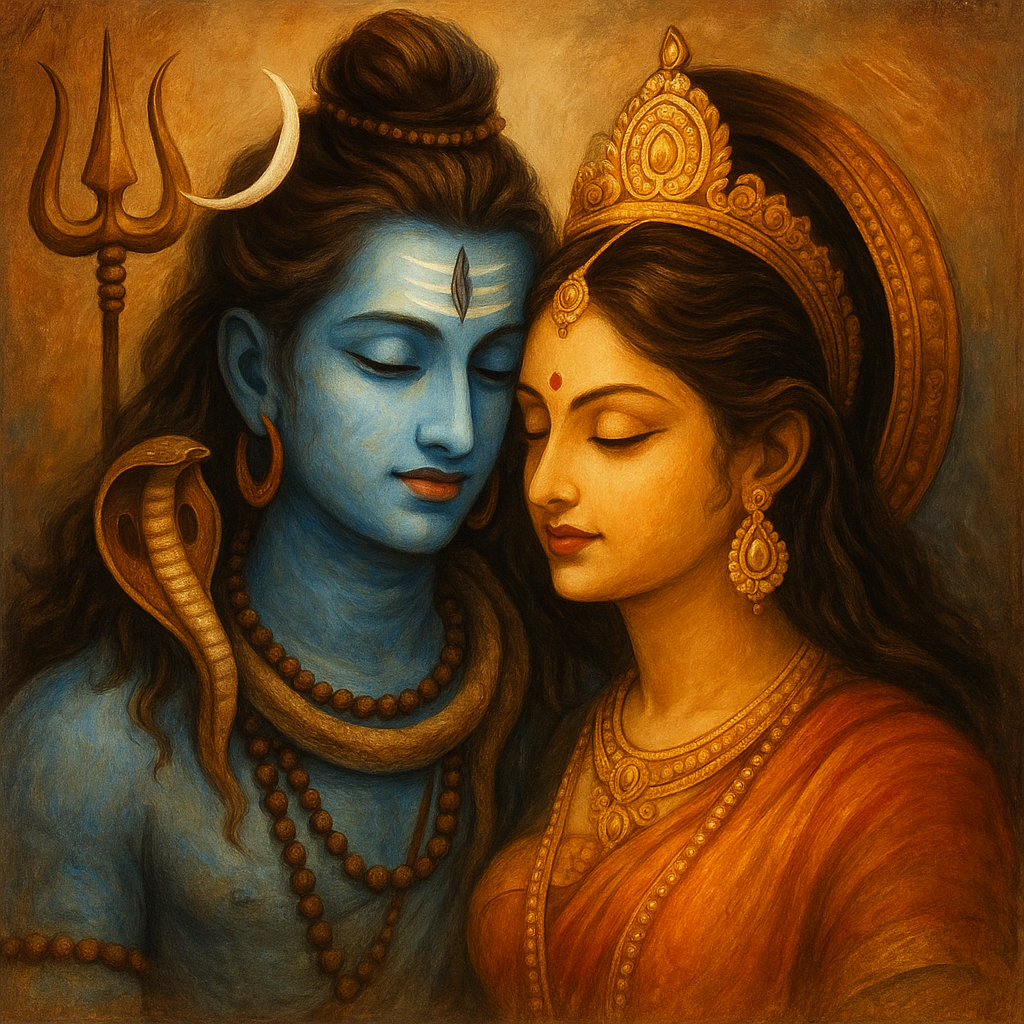

Comments 0
Leave your thought here